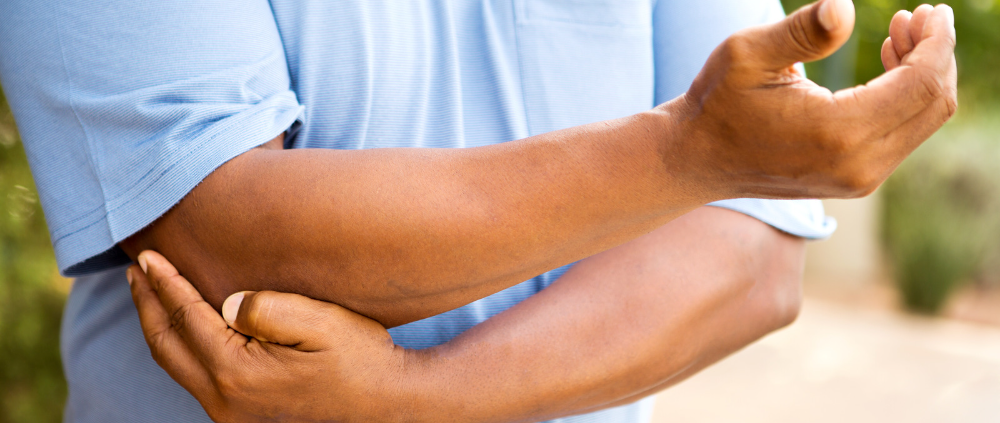Tennis Elbow? Golfer’s Elbow? I Don’t Play Sports!
My doctor diagnosed me with tennis elbow and/or golfer’s elbow, but I don’t play those sports. How is that possible?
Tennis elbow (lateral epicondylitis) and golfer’s elbow (medial epicondylitis) are two common injuries associated with the elbow. They are both caused by playing sports or doing repetitive motions (gripping, pulling, grasping, and lifting) with the affected arm. Some common functional activities that could cause these injuries include tennis, golfing, painting, throwing a ball, and heavy lifting.
Over time, these repetitive motions will cause wear and tear of the tendons at the elbow and place strain on the muscles.
What are symptoms that someone may experience that would trigger the problem being tennis elbow?
With both lateral and medial epicondylitis, the primary symptom is pain at either the lateral or medial elbow. Other common symptoms can include tenderness with palpation to either the forearm extensor or flexor muscle units, aching elbow in the evening, and elbow stiffness in the morning. Sensation deficits are not associated with either of these injuries and is an entirely different injury.
How are these injuries treated?
A majority of these injuries are treated conservatively. Doctors can prescribe an anti-inflammatory medication along with a steroid injection to the painful area(s). Doctors can also refer a patient to see an occupational or physical therapist to have symptoms addressed.
An occupational therapist or a physical therapist will work with each patient to develop a personalized treatment plan that includes:
- stretching
- manual therapy techniques
- education
- home exercises
- activity modification
- strength training
- custom orthosis
Are there risk factors for one person to get more than another?
Yes, there are certain activities that can exacerbate symptoms. Those activities include anything that leads to overuse of the forearm extensor and flexors (heavy repetition, poor posture, forceful grasp, etc.).
The incidence for lateral and medial epicondylitis is greatest between 35-55 years old (men and women are affected equally). If an individual is younger than 35 and experiencing symptoms, a screen should be completed for additional causes.
Can you prevent tennis elbow or golfer’s elbow?
There is no way to prevent lateral or medial epicondylitis, but there are ways to decrease your chances of having this injury. Those ways include having proper posture, avoiding repetitive motions, avoiding forceful grasping.
If you suspect Tennis Elbow, Golfer’s Elbow or any problem with your arm, find a Physical or Occupational Therapist in your area to start the program you need to get back to the activities you enjoy.
Joshua Eppinger, MOT, OTR/L received his Bachelor of Arts in Human Performance & Health and his Master of Occupational Therapy from West Virginia University. Joshua’s professional interests are Orthopedics and Hand Therapy. He has experience and training in the evaluation and treatment of post-surgical and non-surgical diagnoses. Josh’s experience includes a variety of conditions pertaining to the hand and upper extremities including fractures, dislocations, sprains, torn ligaments, Tennis Elbow, Golfer’s Elbow, as well as multiple other diagnoses of the hand, wrist, arm, and shoulder.



